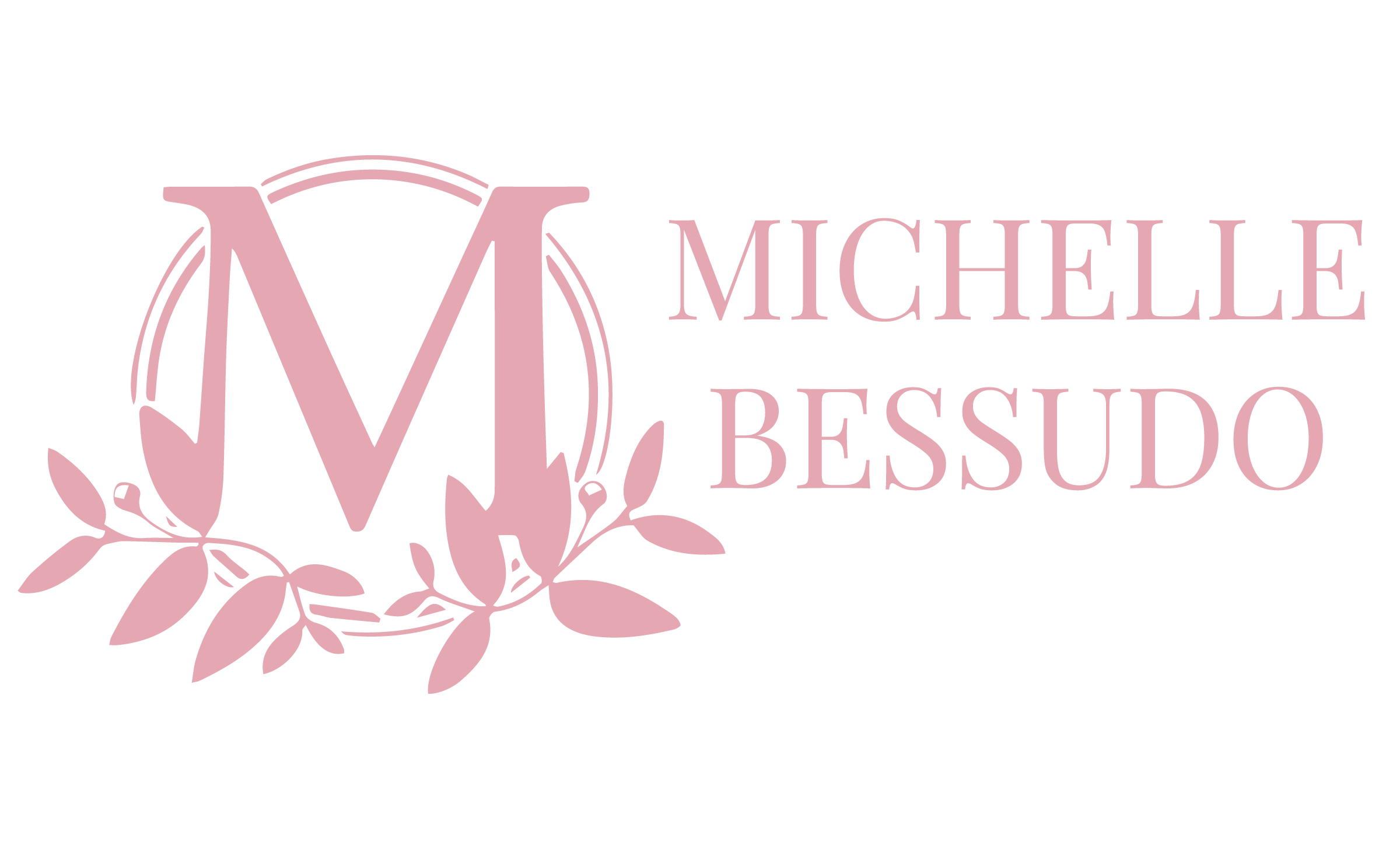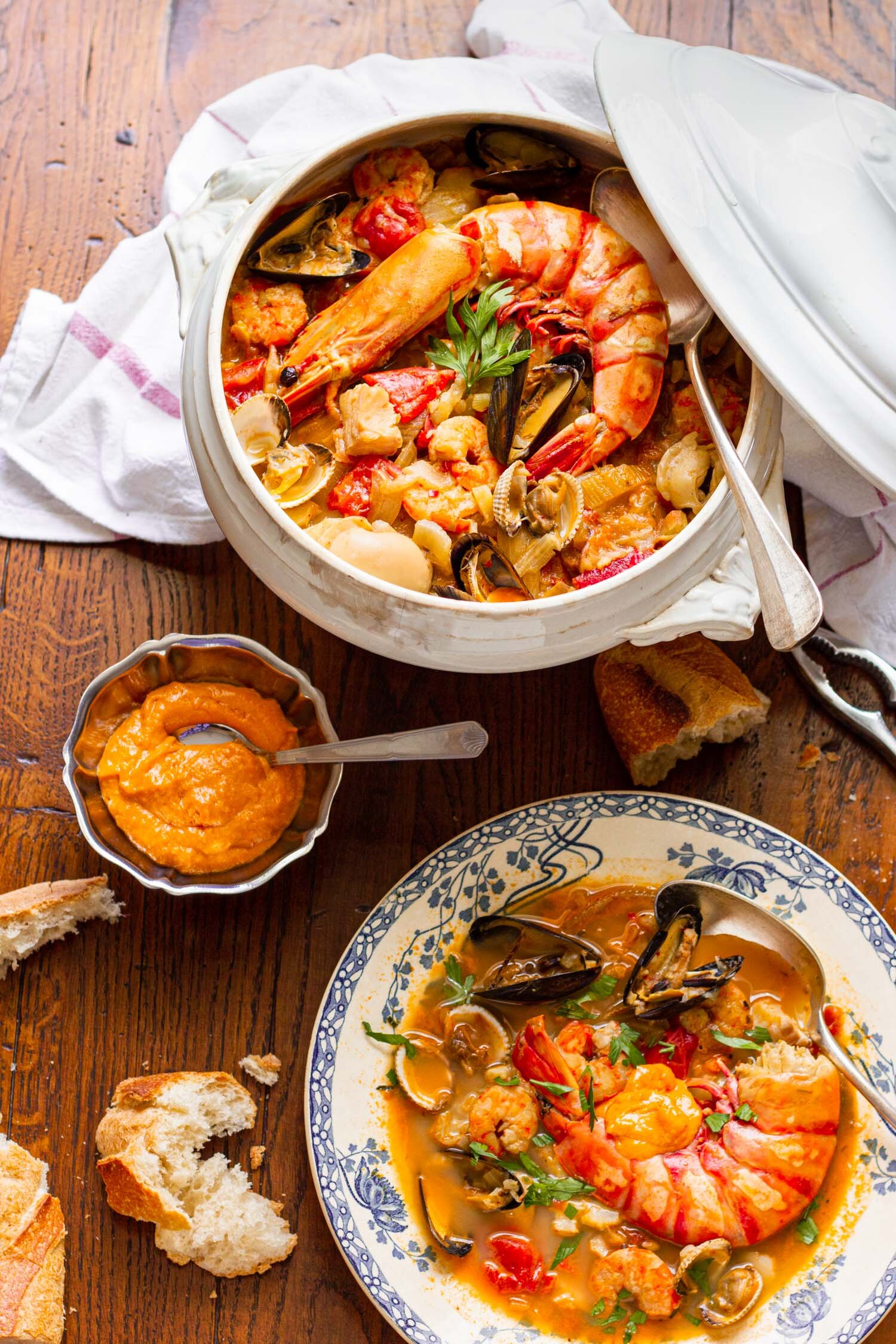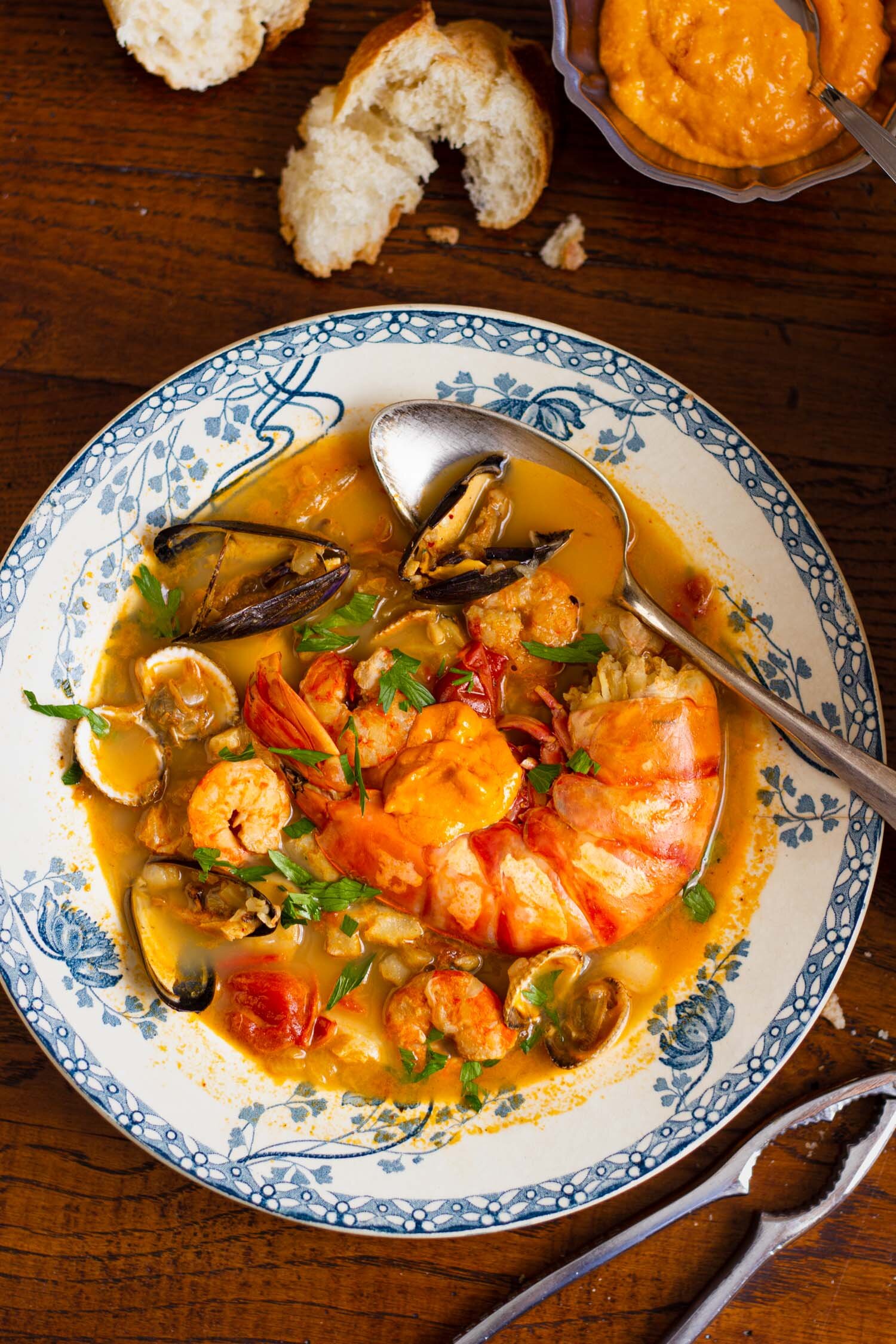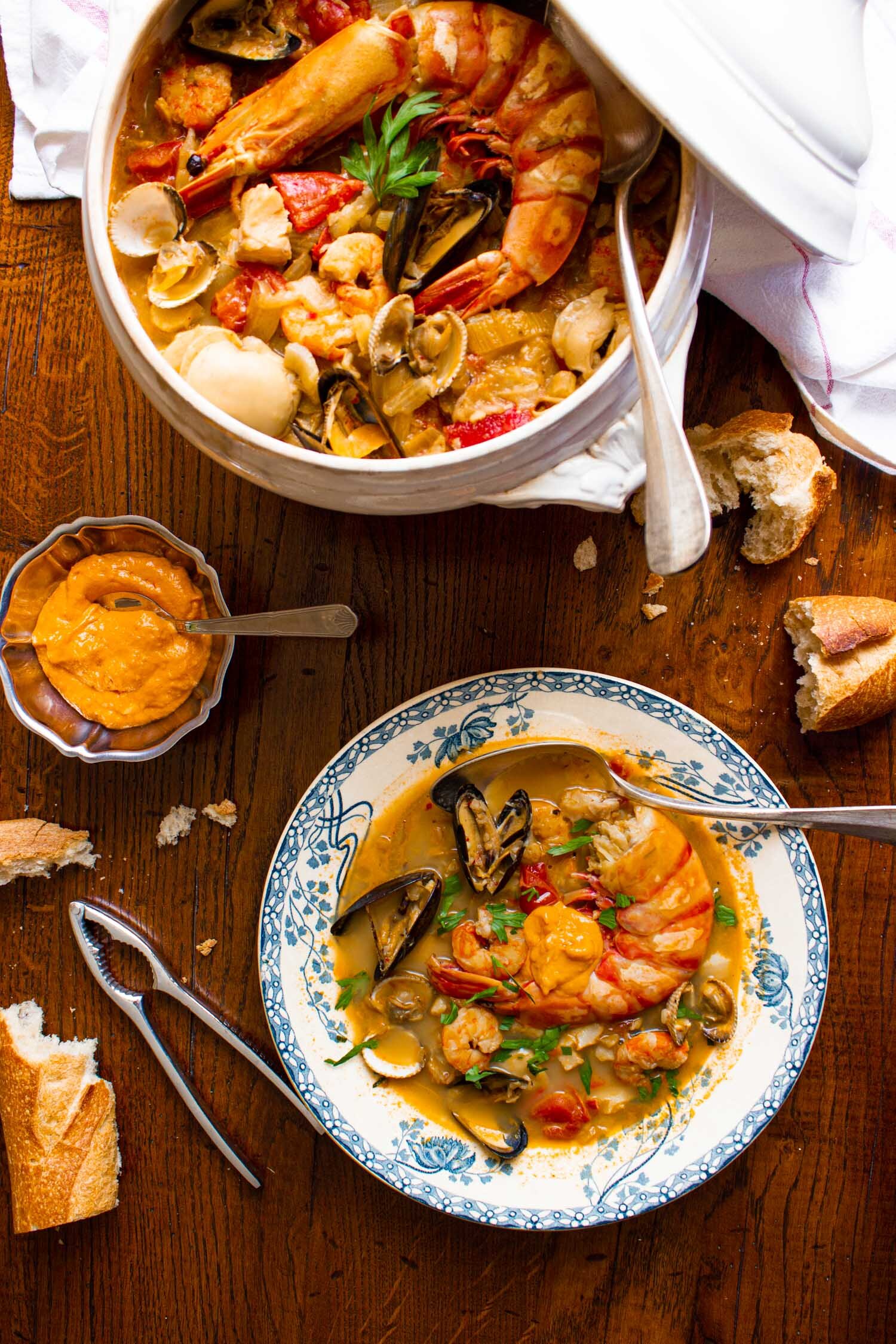Mastering the perfect Bouillabaisse
Although I have been a huge fan of a great bouillabaisse since as long as I can remember, it wasn’t until Mr. Frenchie showed up in my life that it became a kind of “staple” in my recipe repertoire. You see Frenchie is all about routines, most of which revolve around soup.
My mom is partly to blame, being the soup enabler that she is. As soon Frenchie lands in Bogota, he expects a piping hot plate of Ajiaco (a traditional potato soup from Bogota, Colombia) and all it’s lovely toppings. Mom happily obliges.
The same goes for Bouillabaisse, every time we travel to his family’s house in the south of France he expects a Bouillabaisse on day two of our trip, giving us just enough time to head over to the market and pick up all the ingredients. I have to admit though, that it is actually me who always factors Bouillabaisse into the menu, Frenchie just gladly agrees, as it is in fact one of his favorite meals.
After trying several different recipes I came up with my own Frankenstein version of it. I took into account what I liked the most and disliked the most (which frankly was very little) out of each and every one of them.
But being the nerd historian that I am, I just couldn’t help myself and I delved to find the origin of this delicious “fishermen’s” soup from Marseille. Let me tell you that finding the origin of this Mediterranean fish stew was like finding a needle in a haystack, and everybody and their mother claims to have come up with it. Granted, deciding to make a fish stew in a fishing port does not required a huge imagination.
A possible Greek Origin to Boullabaisse
And so I read that the Greeks claim it as their own. It is said to have been exported to Marseille by fleeing Ionian Greeks from the city-state of Phocea who were escaping the Persian domination of Cyrus the Great circa the year 600 B.C. Focean Greeks set up shop all over the Mediterranean, and particularly in a little colony they had on Gaulish soil called Massalia, now a days called Marseille.
However greeks do have a soup which loosely resembles a bouillabaisse called kakavia in that it uses fish and saffron, that’s it. That being said, kakavia is also absolutely delicious and I have decided that I will be making it (and sharing it with you) in the near future.
Kakavia much like Bouillabaisse, get its name from the way it is cooked. Traditionally Kakavia was made in a three-legged traditional Ionian pot called Kakavi. Boullabaisse gets it’s name from from the Provencal Occitan bolhabaissa a composite word formed from bolhir, to boil and abaissar, to reduce.
Another romantic legend revolving around these formidable fish stews, states that the Greek goddess of love, Aphrodite fed the infamous kakavia to her husband, Hefaistos, in copious amounts so that after the meal he would fall asleep long enough that she could pursue her lover, Ares, god of war. There is an expression in Spanish that fits perfectly in this situation: “barriga llena, corazón contento” which translates to: “full tummy, happy heart”.
Lovely as those stories may seem, there are just too many historical lagoons for my taste. First of all, I find them too far fetched mainly because a ton of the ingredients in Bouillabaisse were unknown to the Greek world of the Pre-Pericles era. Actually some were unknown until the spoils of the Spanish Empire made their way to the Mediterranean.
I cannot therefore, despite being a lover of all things greek, keep a straight face and tell you that Bouillabaisse was a greek invention that the French just happened to perfect over the years. This is simply a very well marketed fisherman’s stew, which became popular thanks to a very “hip” restaurant owned by provencal brothers in Paris in the late 18th century and a recipe by super-star chef Jean-Baptiste Reboul in his best seller: La cuisinière provençale published in 1897
Having established its humble origins, more likely than not this stew was made with whatever was left from the day’s catch. So I kinda “wing it” with the ingredients, as much as a pastry chef “wings” things. Just in case you are unaware of what other chefs and cooks think of pastry chefs, lets just say that they tend to make fun of us for being obsessively precise on all things food.
Now what I usually do is just go to the fishmonger or the supermarket and look at the array of fish available. I know which kind of fish should go in a Bouillabaisse (see list below) and buy a variety of them. I try to get at least four or five different kinds of fish and two types of shellfish. This makes the soup a much richer and flavorsome.
By the way, translating this list for you, was a very complex task. I once heard, that you don’t really REALLY know a language until you know the names of fish, flowers and songbirds. Now I tend to think my English is pretty damn good. I get away with an accent that most people think comes from some undefined place in the Midwest; god bless my very fine tuned ear and the good teachers that taught in CNG; the American school in Bogotá. But boy I was absolutely clueless as to fish names in English.
I remember when we move to the UK (were we lived for the briefest of moments before coming to Paris) just staring at the beautifully packaged fish at my local Waitrose trying to figure out what they were. I had to take out my phone and google translate my way around.
Add another language into the mix, French, and the task is even harder. So now I had to cross reference my fish from French to Spanish and then into English. However I came out of this exercise a slightly more cultured woman.
My complete list of fish for Boullabaisse
cod
John Dory
sea bass
flounder
snapper
conger
pollock
Scorpionfish
hake
halibut
perch
clams
mussels
crab
prawns
squid
lobsters
shrimp
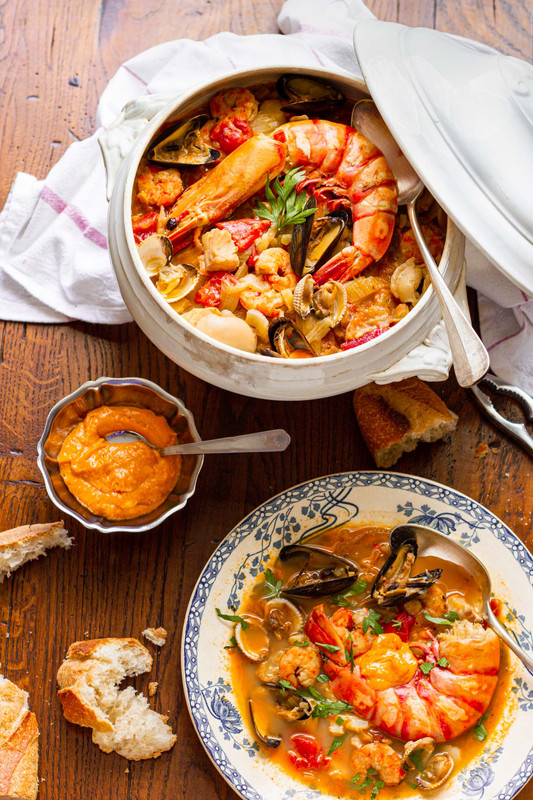
Mastering the perfect Bouillabaisse
Ingredients:
- 1 kg of fish heads, fish bones, trimmings, shrimp shells. Basically anything to bony or hard that you can’t eat but will make a fantastic tasting fish broth. Ask your fishmonger, they are glad to get rid of this stuff!
- 1 generous glug of good quality extra virgin olive oil
- 3 bay leaves
- 2 cloves garlic (skin on)
- Black peppercorns to taste
- 1 large onion
- 2 leeks, I use only the green leaves for the broth and use the white stalks in the soup later.
- 4 sprigs of thyme
- 1 large fennel bulb, like the leeks I only use the leaves for the stalk, I reserve the rest for later.
- 1 bunch flat-leaf parsley
- The peel of a quarter of an orange, white pith removed
- 1 level tbsp salt or two organic fish stock cubes
- 3 l (12 cups) of water
- Optional celery leaves (I love the flavor that celery leaves add to stock, but that’s just me)
- 3 onions
- 3 ripe tomatoes
- Olive oil
- 3 cloves garlic
- 1 large bulb fennel
- 2 bay leaves
- 2 large pinches of saffron
- 500 g (a little over a pound) of boiling potatoes
- 2.5 kg (5.5 lbs) of assorted fish (see list above)
- 1 recipe fumet
- Being completely honest with you, I tend to buy ready-made Rouille. It’s dirt cheap and really really good. I am however aware that not every supermarket outside of France carries it. So here’s my foolproof and super duper easy to make recipe.
- 1 Roasted and peeled large red bell pepper
- 1 red hot chile pepper
- The juice of half a lemon
- 3 cloves garlic
- 4 tbsp bread crumbs or almond meal
- The leaves of 3 sprigs fresh thyme (you can use dried thyme too, but fresh thyme just has a bit more bite in it)
- Salt to taste
Instructions:
- 1. Roughly chop leek leaves. Wash them thoroughly to remove any dirt that might have been trapped between them.
- 2. Chop onion into thin “petals”, called juliennes.
- 3. Crush garlic cloves
- 4. Place oil in a LARGE stock pot on medium heat and add your vegetables once it is hot. Stir constantly to avoid burning. Once veggies are soft add shrimp shells and heads.
- 5. After shells turn bright pink add the rest of your ingredients including the water and just let it boil away uncovered for half an hour at moderate heat.
- 6. Turn off, allow to cool for a while, then discard all solids from your broth
- Julienne your onions and fennel and finely slice the garlic. Roughly chop tomatoes and peel and cut your potatoes into large cubes. Set them all aside.
- Pour oil into a large stockpot. Once the oil is hot add saffron, this allows the saffron to release its flavors into the oil. Add onions, fennel, and garlic. Allow vegetables to soften stirring constantly. Pour fumet into the onions, add tomatoes, potatoes, and bay leaves.
- Cut fish into large cubes. Once the potatoes are just about cooked add your fish into soup.
- Allow to simmer for a couple of minutes. Until the fish is firm and flaky. Fish out bay leaves.
- Ladle soup in bowls with lots of fish for everyone!
- * Optional, but highly recommended, serve your soup with crusty bread and a heaped spoonful of Rouille, see recipe below
- Technically you should make the sauce in a pestle and mortar and pound at it until it has a paste consistency and then add the oil. But if you’re impatient like me you can just blitz everything up either in a blender or a food processor, and that’s it. you’re done!
Calories
396Fat (grams)
6.9Sat. Fat (grams)
.6Carbs (grams)
26Fiber (grams)
5.8Net carbs
21.2Sugar (grams)
6.7Protein (grams)
59.5Sodium (milligrams)
265Cholesterol (grams)
153